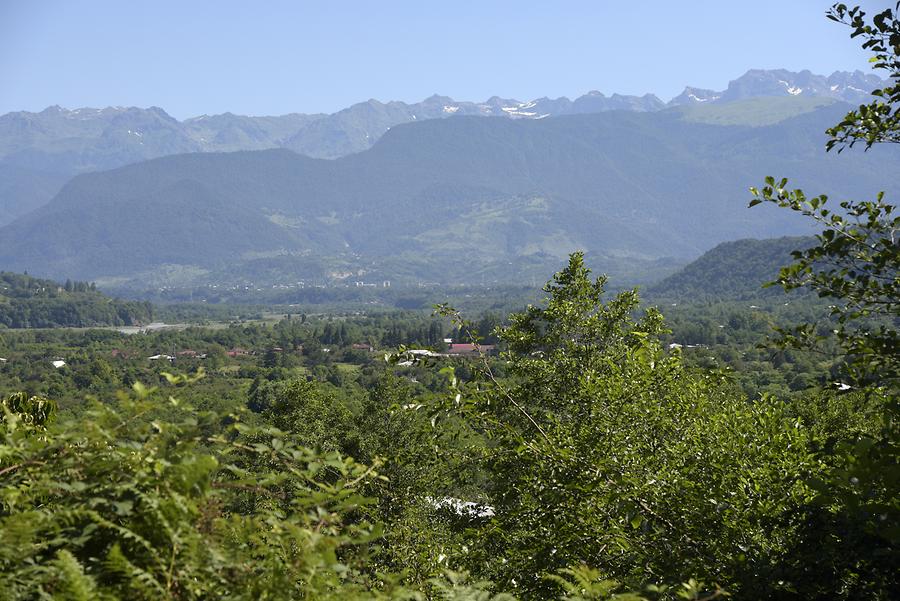Greater Caucasus#

Greater Caucasus, July 2018, © Gerhard Huber, under CC BY-NC 4.0 +Edu
Schon bald kommt der 1100 km lange, Große Kaukasus ins Blickfeld. Er ist Teil des alpidischen Gebirgsbogens, der sich von den Pyrenäen bis zum Himalaya erstreckt. Aufgefaltet wurden diese Gebirgssysteme, weil Kontinentalplatten von Süden her gegen die eurasische Platte drücken. Im Falle des Kaukasus erfolgte der letzte große Schub erst vor 2 Millionen Jahren. Begleitet wurde der Prozess von hefigen Vulkanausbrüchen. Die beiden Vulkane Elbrus und Kasbegi legen Zeugnis von der unruhigen Geologie ab. Der Kaukasus bildet die geologisch gefährliche Grenze zwischen Europa und Asien. Mit starken Erdbeben ist jederzeit zu rechnen. Im Kern besteht das Gebirge aus Granit und enthält vor allem in der Region des Kaspischen Meeres riesige Öllagerstätten, deren Gesamtvolumen jenem von Saudi Arabien entspricht.
Soon one gets a view of the 1100 km long Greater Caucasus. It is part of the alpidic mountain range that stretches from the Pyrenees to the Himalayas. These mountain systems were unfolded because continental plates had pushed against the Eurasian plate from the south. In the case of the Caucasus, the last major push came only 2 million years ago. The process was accompanied by vast volcanic eruptions. The two volcanoes Elbrus and Kasbegi are proof of the turbulent geology. The Caucasus forms the geologically dangerous border between Europe and Asia. Strong earthquakes can be expected at any time. At its core, the mountain range is made up of granite and contains huge deposits of oil, mainly in the Caspian Sea region, with a total volume equal to the one in Saudi Arabia.